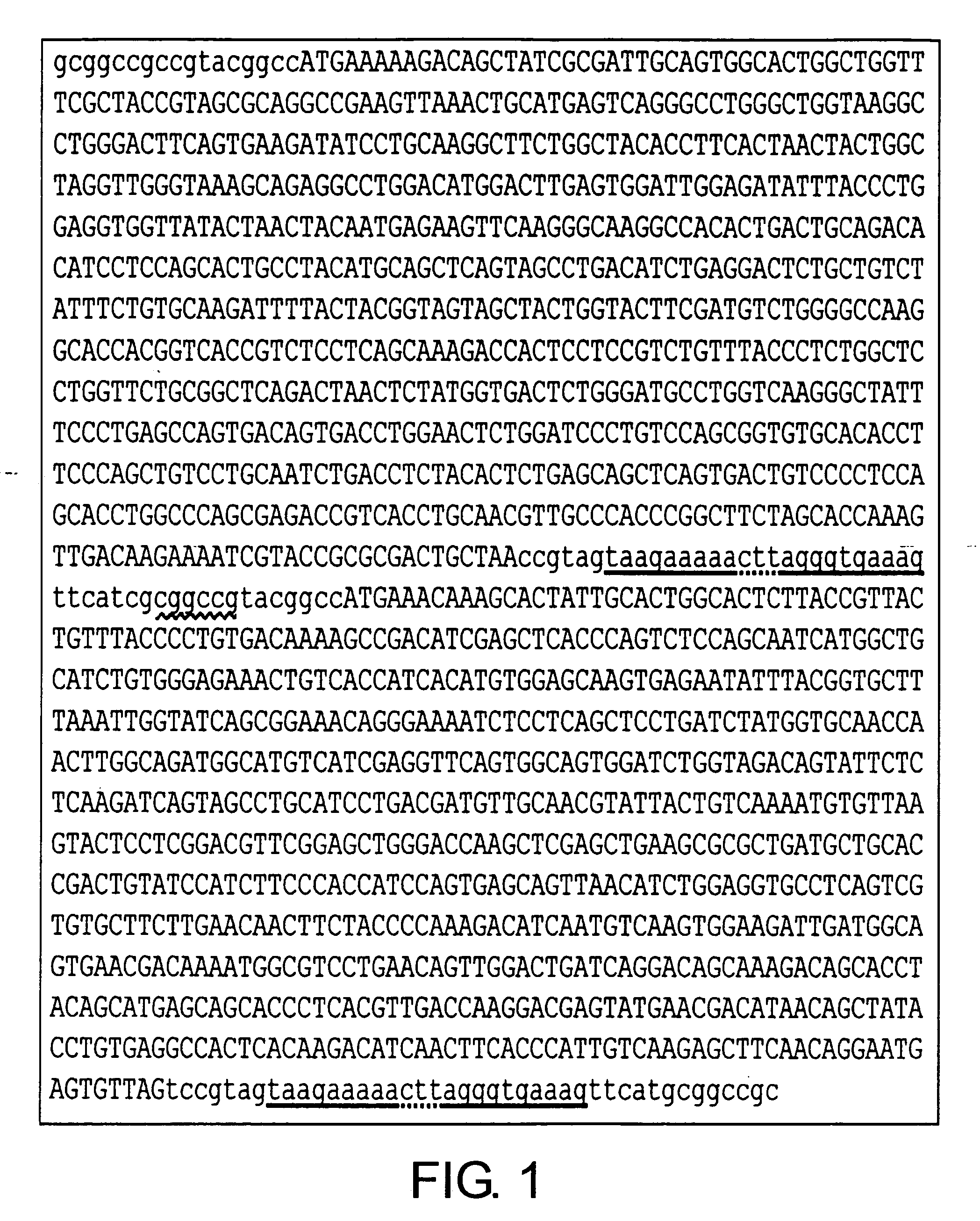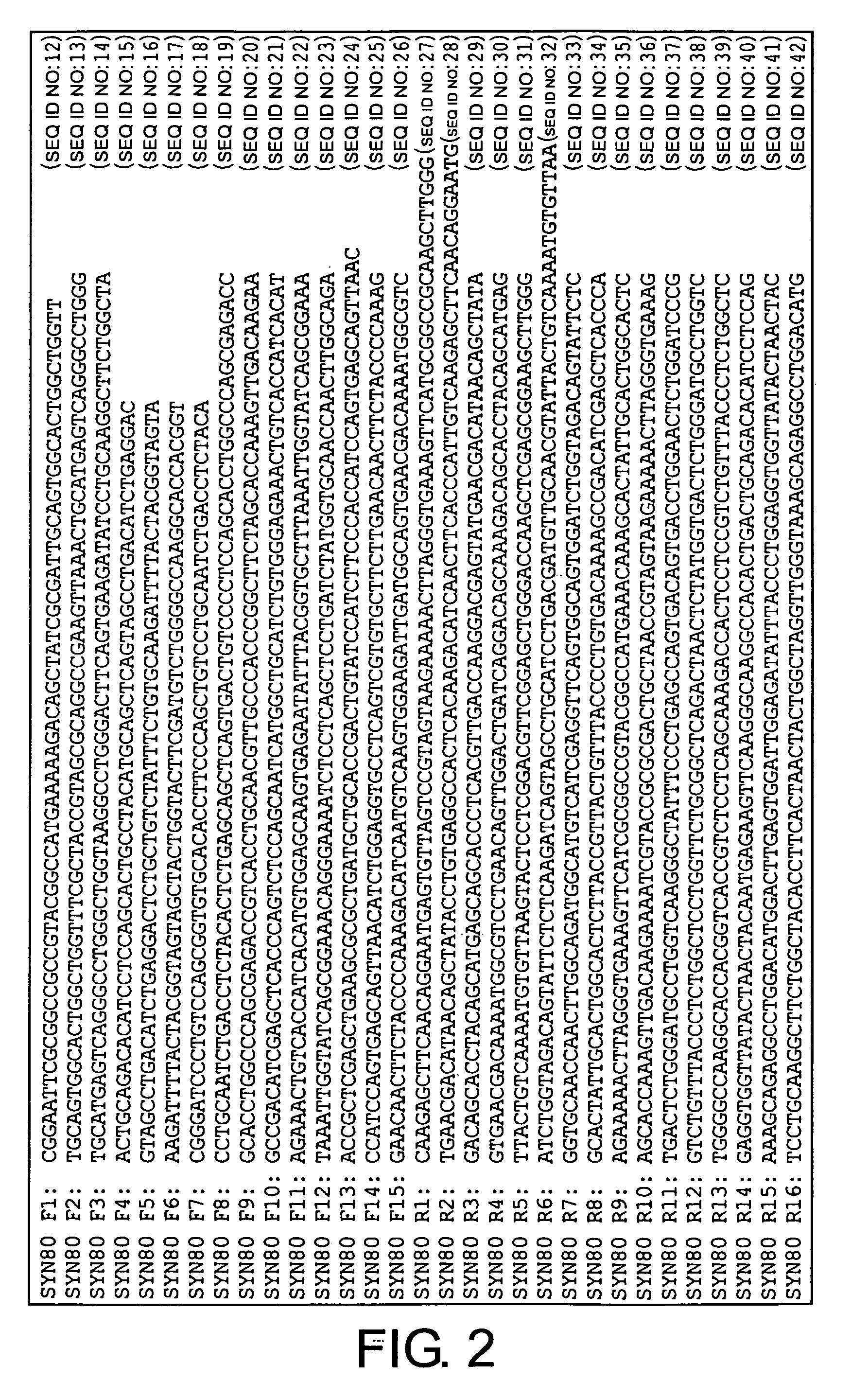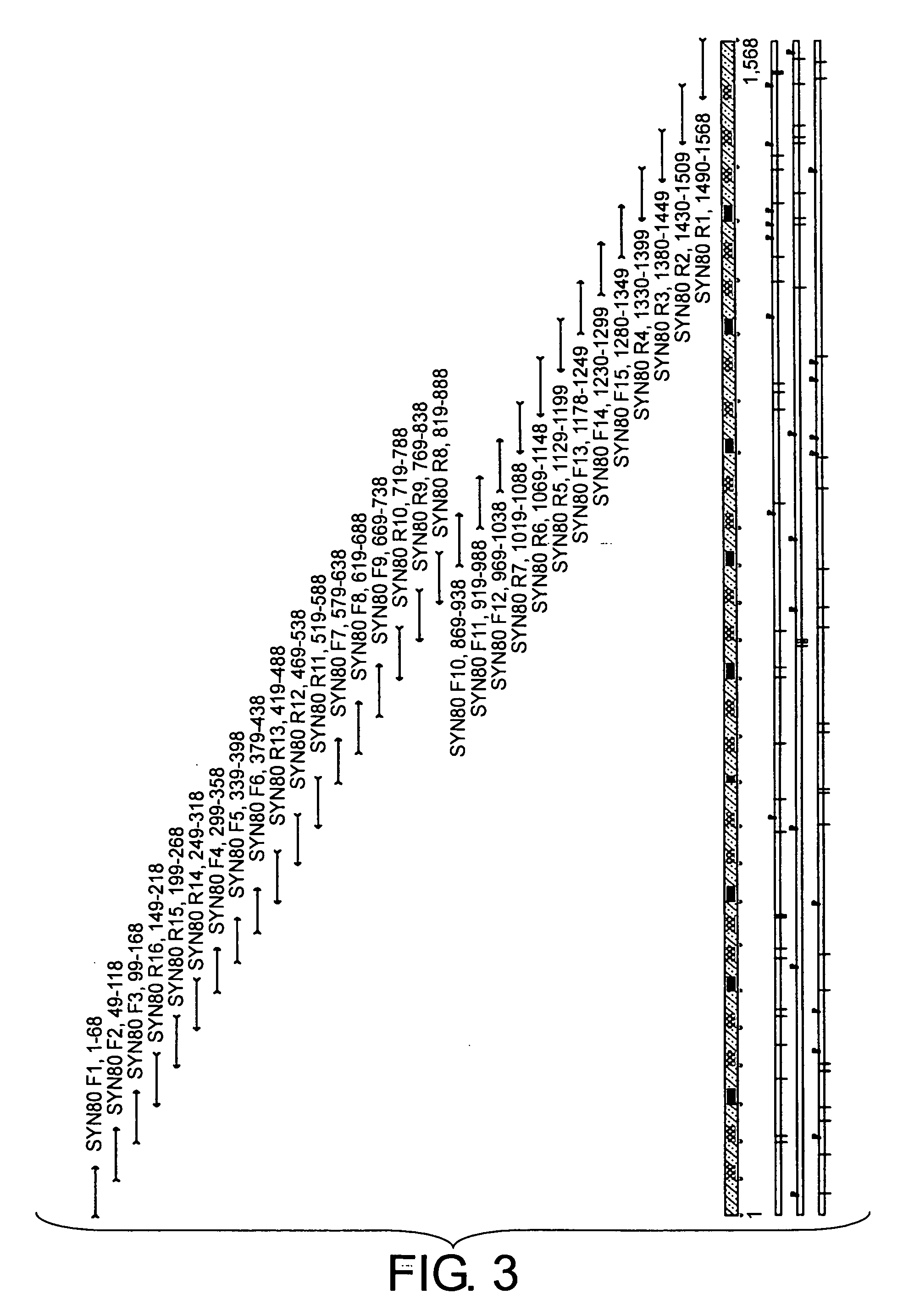Pramyxovirusl vectors encoding antibody and utilization thereof
- Summary
- Abstract
- Description
- Claims
- Application Information
AI Technical Summary
Benefits of technology
Problems solved by technology
Method used
Image
Examples
example 1
Construction of a SeV Vector Carrying Fab Gene
[0134] A treatment vector aiming at the inhibition of axonal outgrowth inhibitors (such as NOGO) will be illustrated as an application of SeV vectors to spinal cord lesions. Since IN-1 (mouse IgM κ type) is known as a neutralizing antibody raised against NOGO (Brosamle, C. et al., J. Neurosci. 20(21), 8061-8068 (2000) and such), a transmissible-type SeV vector carrying the IN-1 gene was constructed. An F-gene defective SeV vector (transmission-deficient type) was also constructed.
1) Total Synthesis of the Gene
[0135] To construct a SeV vector carrying the Fab (H and L chains) gene of IN-1, a total synthesis of the Fab gene of IN-1 was performed. Based on the nucleotide sequence of a single chain Fab fragment of IN-1 (Accession No. Y08011; Bandtlow, C. et al., Eur. J. Biochem. 241(2) 468-475 (1996)), a sequence was designed such that the His-tag was removed, NotI recognition sites were comprised at both ends, and an H chain (SEQ ID NO:...
example 2
Functional in Vitro Assessment of SeV Carrying IN-1 Gene
[0148] IN-1 is known to be a neutralizing antibody raised against the axonal outgrowth inhibitor NOGO (Chen, M. S. et al., Nature 403, 434-439 (2000)). Therefore, to functionally assess SeV carrying the Fab gene of IN-1, it is necessary to observe the activity of promoting axonal outgrowth under conditions that suppress the inhibition of axonal outgrowth; that is, in the presence of an axonal outgrowth inhibitor. A spinal cord extract comprising an inhibitor is referred to as q-pool, and was prepared according to the method reported by Spillmann et al. (Spillmann, A. A. et al., J. Biol. Chem. 273, 19283-19293 (1998)). Spinal cords were removed from three adult rats to obtain 1.5 mg of q-pool. IN-1 activity was assessed according to the methods of Chen and of Spillmann et al. (Chen, M. S. et al., Nature 403, 434-439 (2000); Spillmann, A. A. et al., J. Biol. Chem. 273, 19283-19293 (1998)). Two assessment methods were employed, d...
example 3
An In Vivo Assessment System for Assessing Vector Expression Durability, and Expression After Repeated Administration
[0151] To assess the potential of vector expression durability and repeated administration, it is important to establish amore efficient and more reliable in vivo assessment system. This example discloses an assessment system by a newly developed mouse intra-auricular administration. It was proved that when a transmissible-type SeV vector carrying the GFP gene (SeV18+GFP: 5×106 GFP-CIU / 5 μl), or an F gene-defective type SeV vector (SeV18+GFP / ΔF: 5×106 GFP-CIU / 5 μl), was intra-auricularly administered to mice, it is possible to observe fluorescence of the GFP protein expressed in infected cells noninvasively, from outside (FIG. 9). This assessment system is noninvasive, and enables time-dependent observation of the SeV vector-derived protein (GFP) expression using the same individual, and thus this system can be thought to be very suitable for the assessment of gene e...
PUM
| Property | Measurement | Unit |
|---|---|---|
| Gene expression profile | aaaaa | aaaaa |
| Durability | aaaaa | aaaaa |
Abstract
Description
Claims
Application Information
 Login to View More
Login to View More - R&D
- Intellectual Property
- Life Sciences
- Materials
- Tech Scout
- Unparalleled Data Quality
- Higher Quality Content
- 60% Fewer Hallucinations
Browse by: Latest US Patents, China's latest patents, Technical Efficacy Thesaurus, Application Domain, Technology Topic, Popular Technical Reports.
© 2025 PatSnap. All rights reserved.Legal|Privacy policy|Modern Slavery Act Transparency Statement|Sitemap|About US| Contact US: help@patsnap.com



